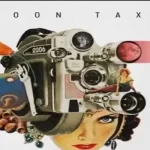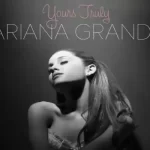Music is an enchanting form of artistic expression that transcends cultural boundaries, resonating with people around the world. One such genre that encapsulates this universal appeal is Cumbia, a vibrant and rhythmic musical style originating from the heart of Latin America.
Music Songs:
Cumbia’s musical repertoire boasts a plethora of enchanting songs that have stood the test of time. From the infectious beats of “La Cumbia Cienaguera” to the timeless classic “La Pollera Colorada,” each track tells a unique story and offers a glimpse into the rich cultural tapestry of Latin America. These songs often blend traditional instruments like drums, flutes, and accordions, creating a melodious fusion that entices listeners to dance and celebrate life.
Music Artists:
Behind the rhythmic allure of Cumbia are the talented artists who have dedicated their lives to crafting soul-stirring melodies. One such luminary is Aniceto Molina, often referred to as the “King of Cumbia,” whose charismatic performances and innovative compositions revolutionized the genre. The iconic Grupo Niche, with its blend of salsa and Cumbia, and the boundary-pushing A.B. Quintanilla III y Los Kumbia Kings have also left an indelible mark on Cumbia’s evolution.
Music Examples:
To fully grasp the essence of Cumbia, it’s essential to explore some quintessential examples. “Cumbia Sampuesana” emanates from Colombia’s Caribbean coast, exuding a festive vibe with its syncopated rhythms and joyful melodies. On the other hand, “Cumbia Amor de Fantasia” by Los Angeles Azules showcases the genre’s modern reinvention, seamlessly integrating electronic elements while maintaining its traditional roots.
Cumbia Music Characteristics:
Cumbia music is a vibrant and rhythmic genre that originated in Colombia and has since spread throughout Latin America and beyond. Its unique characteristics contribute to its infectious and danceable nature, making it a staple in celebrations and gatherings. Here are some key characteristics of cumbia music:
- Rhythmic Diversity: Cumbia is defined by its distinctive rhythm, often characterized by a steady 2/4 or 4/4 beat. The rhythm is created by a combination of instruments, including drums, shakers, and tambourines, resulting in a lively and syncopated feel.
- Infectious Melodies: Cumbia melodies are typically catchy and melodically simple, making them easy to sing along and dance to. The use of repetitive melodic motifs adds to the genre’s accessibility and memorability.
- Accordion and Percussion: Traditional cumbia music prominently features instruments such as the accordion, providing a lively and folkloric element to the genre. Percussion instruments like drums, congas, and guacharacas (a type of percussion scraper) contribute to the vibrant and energetic sound.
- Call-and-Response Vocals: Cumbia often employs call-and-response vocal patterns, where a lead vocalist is echoed by a chorus or other vocalists. This interaction creates an engaging and participatory atmosphere for both listeners and dancers.
- Fusion of Cultures: Cumbia’s history is deeply rooted in the fusion of Indigenous, African, and European musical traditions. This diverse blend of influences is reflected in the instrumentation, rhythms, and melodies of the genre.
- Danceable Groove: The infectious rhythm and melodies of cumbia music make it highly danceable. The genre’s dance style involves swaying hips, shuffling steps, and often intricate footwork, creating an immersive and joyful experience.
- Regional Variations: Cumbia has evolved over time and across different regions, giving rise to various subgenres and regional variations. For example, cumbia villera in Argentina, cumbia sonidera in Mexico, and techno cumbia in the United States all showcase unique adaptations of the genre.
- Lyrical Themes: Cumbia lyrics often explore themes of love, romance, heartbreak, and everyday life. The lyrics may vary from light-hearted and celebratory to poignant and reflective, connecting with a wide range of emotions.
- Evolution and Modernization: While maintaining its traditional roots, cumbia has also embraced modern elements, such as electronic instrumentation and production techniques. This fusion has led to the emergence of contemporary subgenres like electrocumbia and cumbia fusion.
- Cultural Identity: Cumbia holds cultural significance for communities across Latin America, serving as a symbol of identity and pride. It is often associated with celebrations, festivals, and social gatherings, reinforcing its role as a cultural cornerstone.
Stylistic Origins:
Cumbia’s stylistic origins can be traced back to the coastal regions of Colombia during the 17th century. It emerged as a product of cultural convergence, with Indigenous, African, and Spanish influences intertwining to create a musical genre that celebrated unity and diversity. The genre’s evolution continued over centuries, adapting to societal changes while preserving its core essence.
Cultural Origins:
Embedded in the cultural fabric of Colombia, Cumbia holds immense significance beyond its musical appeal. It serves as a reflection of the country’s history, capturing the struggles, celebrations, and triumphs of its people. Cumbia’s dance forms, such as the captivating “cumbiamba,” offer a window into the social dynamics and community bonds of Latin American societies.
Derivative Forms:
Cumbia’s magnetic charm has inspired the creation of derivative forms that carry its legacy forward. One notable example is “Tecnocumbia,” a fusion of traditional Cumbia with electronic elements that gained popularity in the late 20th century. Additionally, “Cumbia Villera” emerged from the shantytowns of Buenos Aires, infusing Cumbia with urban grit and poignant narratives.
Subgenres:
Within the vast realm of Cumbia, various subgenres have flourished, each adding a distinct flavor to the genre’s diverse palette. “Cumbia Sonidera” emphasizes the use of echo effects and call-and-response vocals, creating an immersive auditory experience. “Chicha,” originating in Peru, melds Cumbia with Andean and Amazonian sounds, resulting in a fusion that’s both nostalgic and innovative.
FAQs
Q1: What is the history of Cumbia music?
A1: Cumbia’s roots trace back to the 17th century in Colombia, where it emerged as a blend of Indigenous, African, and European influences, eventually evolving into a vibrant and celebrated genre.
Q2: How did Cumbia spread to other countries?
A2: Cumbia’s popularity transcended borders, spreading to countries like Mexico, Peru, and Argentina, where it underwent unique regional transformations while retaining its core essence.
Q3: Who are some modern Cumbia artists to watch?
A3: Keep an eye on artists like La Yegros, who infuses Cumbia with modern electronic elements, and Bomba Estéreo, known for their innovative fusions of Cumbia and other genres.
Q4: What role does Cumbia play in contemporary Latin American culture?
A4: Cumbia remains an integral part of celebrations, festivals, and social gatherings in Latin America, serving as a unifying force that brings people together.
Conclusion:
In the intricate tapestry of musical genres, Cumbia stands as a vibrant and enduring thread that weaves together centuries of cultural heritage. From its humble origins on the Colombian coast to its widespread global influence, Cumbia continues to captivate hearts and move bodies, embodying the spirit of unity, diversity, and celebration that defines Latin American culture. As we embrace the rhythmic elegance of Cumbia, we immerse ourselves in a rich tradition that unites us all through the universal language of music.







